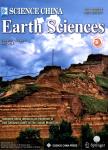Spatial-temporal variation in soil respiration and its controlling factors in three steppes of Stipa L. in Inner Mongolia, China
Spatial-temporal variation in soil respiration and its controlling factors in three steppes of Stipa L. in Inner Mongolia, China作者机构:Institute of Geographic Sciences and Natural Resources ResearchChinese Academy of SciencesBeijing 100101China Chinese Academy of Meteorological SciencesBeijing 100081China Graduate University of the Chinese Academy of SciencesBeijing 100049China
出 版 物:《Science China Earth Sciences》 (中国科学(地球科学英文版))
年 卷 期:2010年第53卷第5期
页 面:683-693页
核心收录:
基 金:supported by National Natural Science Foundation of China (Grant Nos. 40730105, 40673067, and 40973057) National Key Technology Research and Development Program (Grant No. 2007BAC03A11)
主 题:temperate steppe Stipa L. soil respiration season variation interannual variation annual total soil respiration Q10 soil moisture
摘 要:Grassland is the largest terrestrial ecosystem in China. It is of great significance to measure accurately the soil respiration of different grassland types for the contribution evaluation of the Chinese terrestrial ecosystem’s carbon emission to the atmospheric CO2 concentration. A three-year (2005-2007) field experiment was carried out on three steppes of Stipa L. in the Xilin River Basin, Inner Mongolia, China, using a static opaque chamber technique. The seasonal and interannual variations of soil respiration rates were analyzed, and the annual total soil respiration of the three steppes was estimated. The numerical models between soil respiration and water-heat factors were established respectively. Similar seasonal dynamic and high annual and interannual variations of soil respiration were found in all of the three steppes. In the growing season, the fluctuation of soil respiration was particularly evident. The coefficients of variation (CVs) for soil respiration in different growing seasons ranged from 54% to 93%, and the annual CVs were all above 115%. The interannual CV of soil respiration progressively decreased in the order of Stipa grandis (S. grandis) steppe Stipa baicalensis (S. baicalensis) steppe Stipa krylovii (S. krylovii) steppe. The annual total soil respiration for the S. baicalensis steppe was 223.62?299.24 gC m-2 a-1, 150.62-226.99 gC m-2 a-1 for the S. grandis steppe, and 111.31–131.55 gC m-2 a-1 for the S. krylovii steppe, which were consistent with the precipitation gradient. The variation in the best fitting temperature factor explained the 63.5%, 73.0%, and 73.2% change in soil respiration in the three steppes at an annual time scale, and the corresponding Q10 values were 2.16, 2.98, and 2.40, respectively. Moreover, the Q10 values that were calculated by soil temperature at different depths all expressed a 10 cm 5 cm surface in the three sampling sites. In the growing season, the soil respiration rates were related mo



